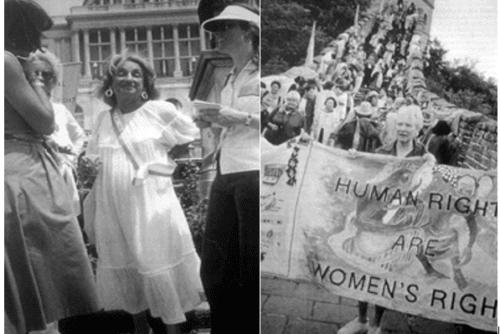William Pinar, on the other hand, considers a different overdetermination in his examination of white supremacy and racial violence in the U.S., arguing that the performativity of white supremacist bodily violence is indelibly marked by its (erotic) attention to gender. Further disrupting the logic of categorical opposition in tacitly heteronormative criminological analyses of gender in prison, Pinar writes:
Lynching and prison rape disclose the conflation of gender and race in the white male mind. These two events, key imprinting events we cannot set aside as bizarre and exceptional, require us to reconceptualize how we understand “race” in America. What must be concluded from the intolerable facts of these phenomena is that, to a considerable extent, the gender of racial politics and violence in America is queer. (1128)
Within the institutional logic of the prison regime, Spillers’ notion of gender deracination under slavery and Pinar’s insistence on the queerly gendered animus of white supremacist bodily coercion are, in the time and location of the prison regime, neither contradictory nor incommensurate. Rather, the deracination constituting the prisoner’s subjection to the logic of chattel (civically and legally dead “property of the state”) and the gender violence producing the figurative and material bodies of white supremacy are mutually constitutive. Read together, Pinar and Spillers illuminate how the statecraft of carceral violence simultaneously 1) produces (and thus relies upon) “gender” as a particularization of the bodies subjected to different and frequently overlapping regimes of disarticulation and disintegration, and 2) overdetermines putative gender “difference” with a logic of depersonalization and fungibility. This symbiotic vacillation between the technology of gender-disrupting racial subjection to the logics of civil death and fungibility, and the primacy of gender in the inscription of a violent racial carcerality, forms the architecture of U.S. carceral globality.
The reflections of Persephani Brooks, a survivor of California women’s jails who joined the abolitionist Time for Change Foundation 1 upon her release, further illustrate the nuances of this carceral symbiosis:
At West Valley [Jail, in San Bernardino County, California], there’s no respect at all. I was pregnant and [the guards] were trying to cuff my feet and cuff my hands around my waist while I was pregnant, and handcuff me to people. They had me strip-searched, which was not cool. I can’t bend over to touch my toes when I’m 7 months pregnant. They are disrespectful and they talk to you any kind of way. If you want to write a grievance on them, the whole unit [of jail inmates] is going to get punished. There’s always one guard that makes you feel like you’re this big. You’re already emotionally torn as a mother in jail. There was no respect at all from some of the guards there….
I wouldn’t wish jail on nobody; I would wish death on you before I would wish jail. Jail is like a constant punishment. The cells are small and if you’re locked down all day, you’d go crazy. I learned that if you’ve done a crime and you got caught, your rights are gone. You don’t have any say so and if it’s raining outside, they’ll say “No it’s not. It’s sunny and bright.” I don’t think that it’s fair that someone should have so much control over your life. 2
- Led by Kim Carter, an abolitionist activist and leader of the All of Us or None movement, Time for Change is widely recognized for its politically educational and personally transformative re-entry programs for women recently released from jail and prison. See the Time for Change mission statement and program description.[↑]
- Interview with Persephani Brooks, San Bernardino, CA, July 12, 2007. Interview conducted by students of Ethnic Studies research seminar, under supervision of the author.[↑]



